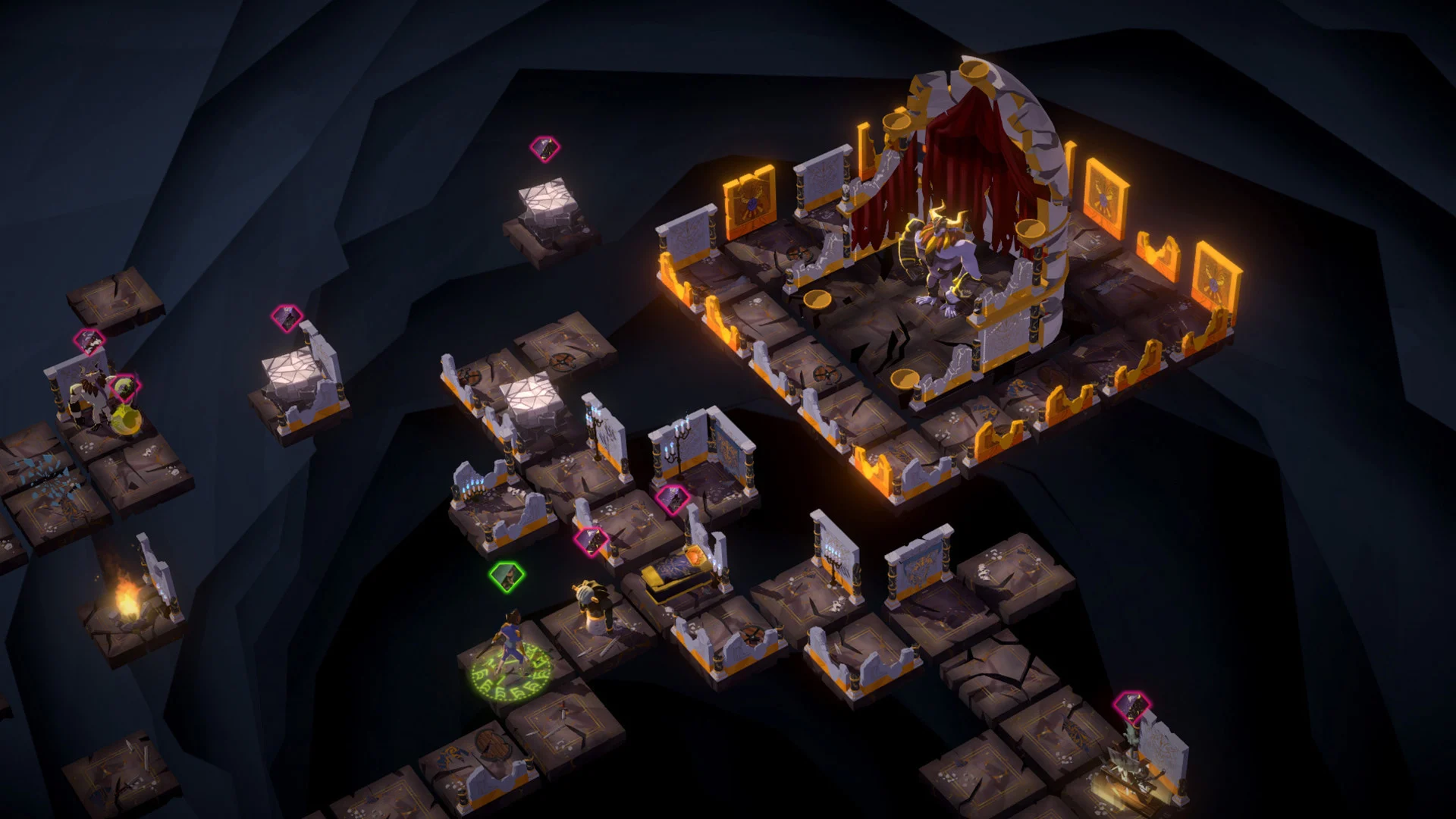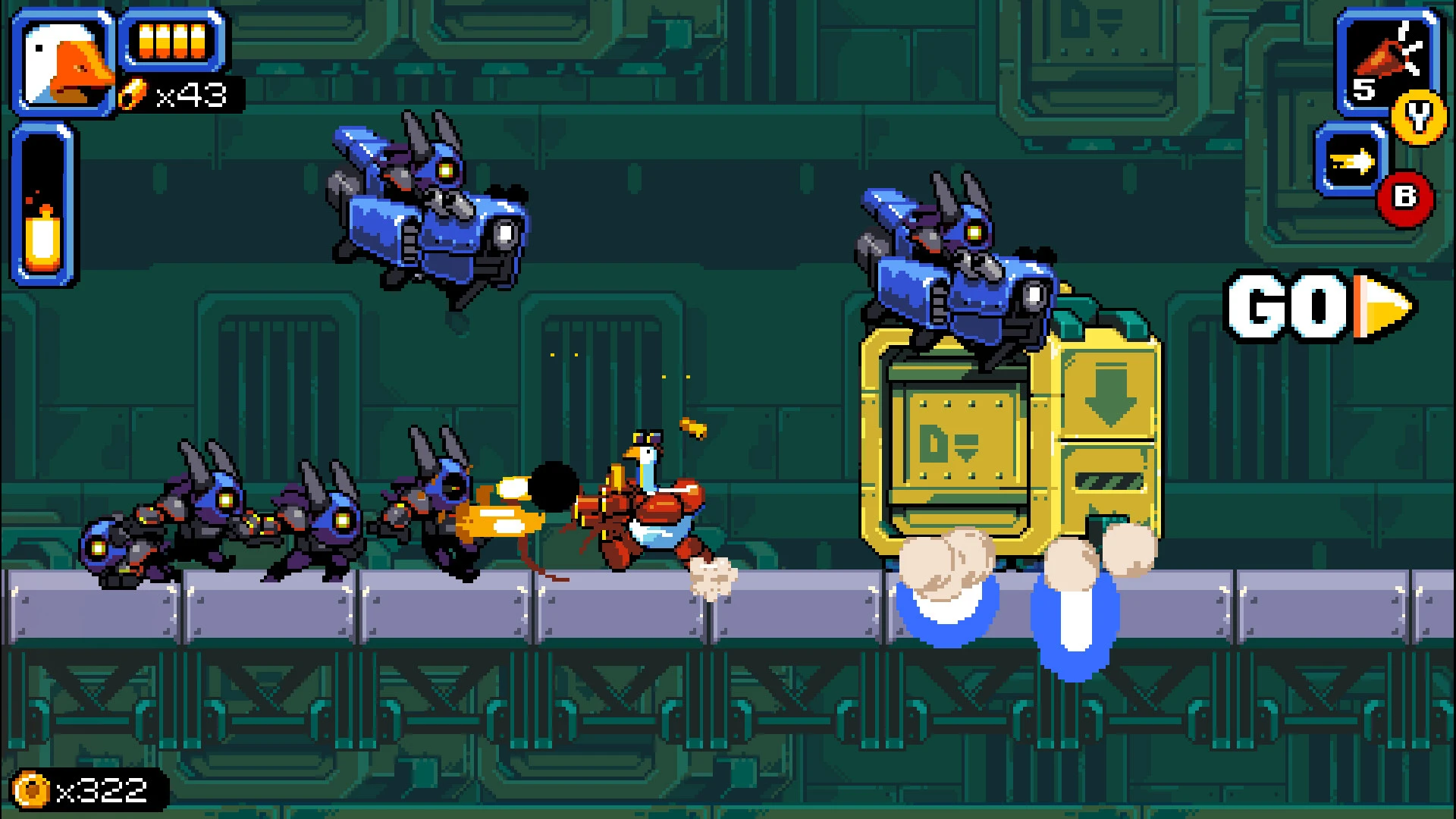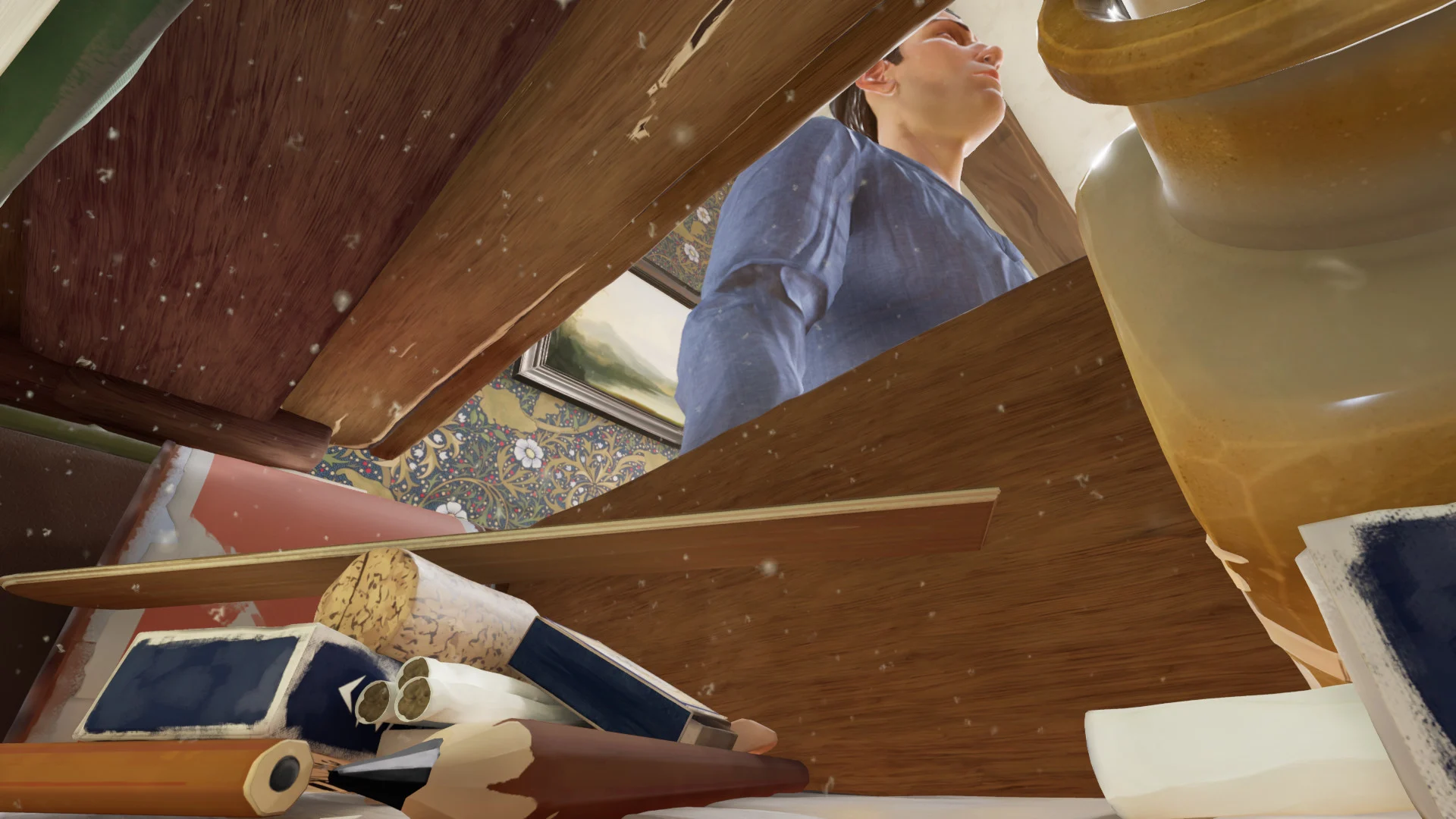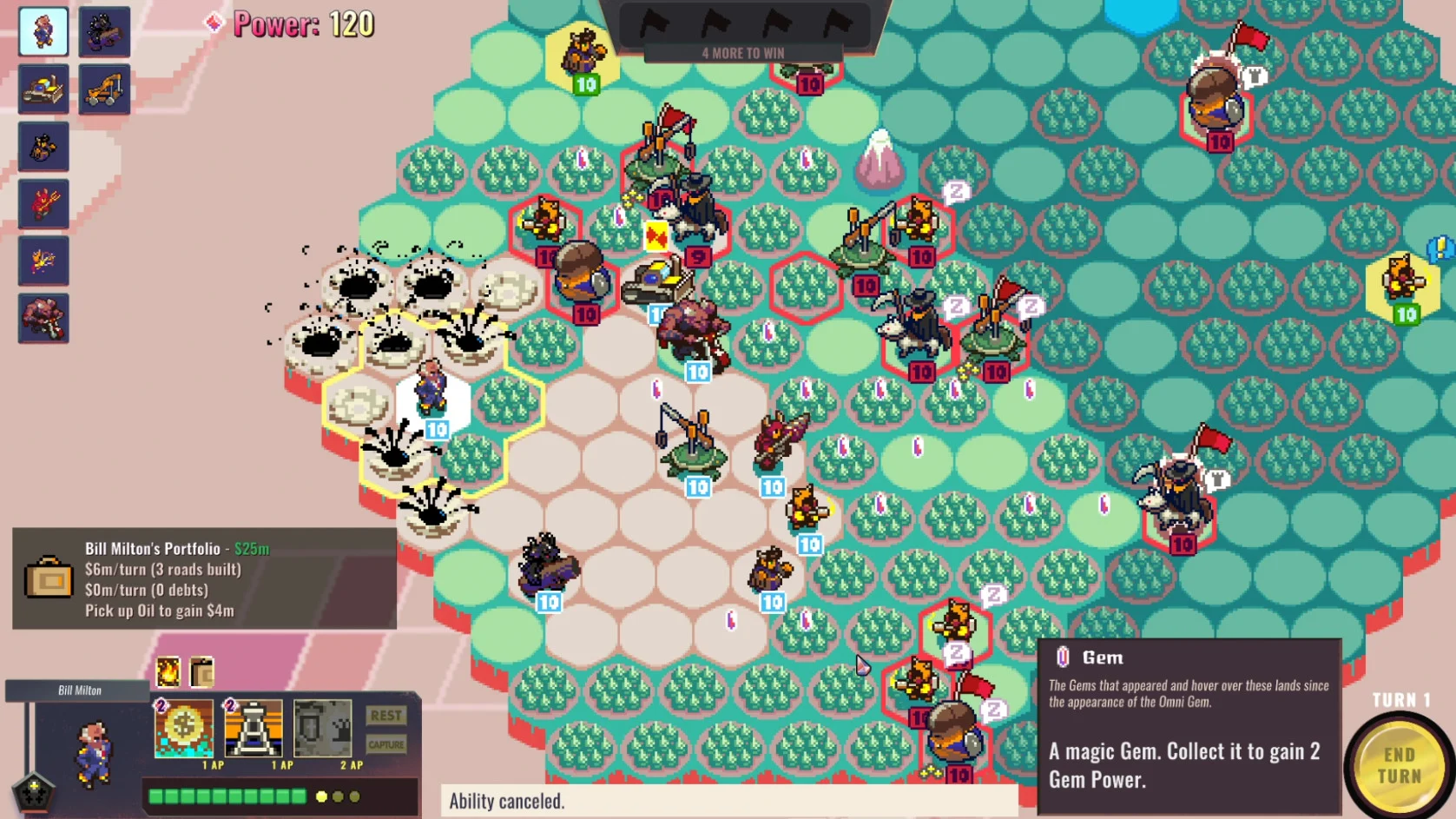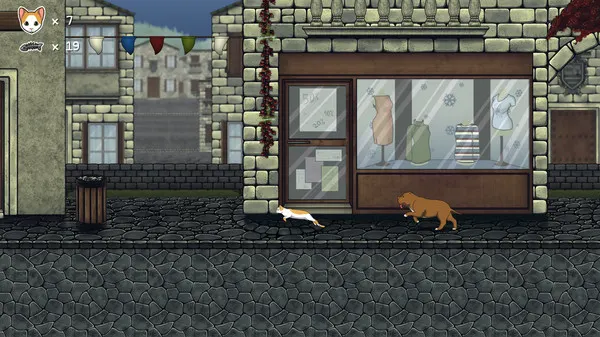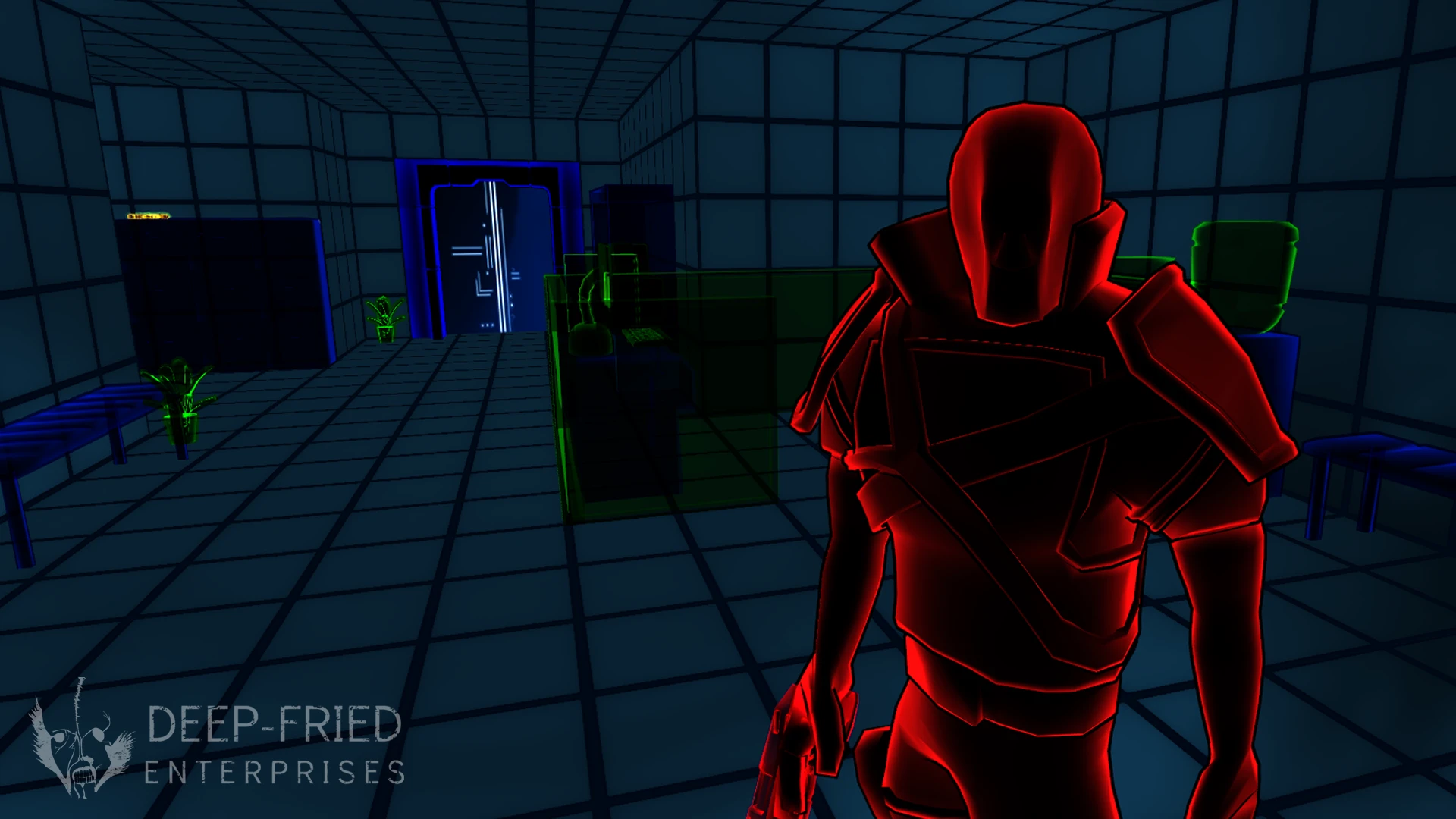Regular readers of Geeky Hobbies will know that I am a big fan of both board games and video games. Due to this I am always intrigued when a video game tries to blend the two. In recent years this trend has grown as there have been quite a few indie games that have tried to implement various card game mechanics into video games. In particular games where you build your own deck of cards that are used in combat have become pretty popular. While I like card games that have you build your own decks, I am generally not a huge fan of video game deck building games as I usually like playing physical card games instead of playing digital card games. Sometimes there is an interesting twist on your typical card combat game though that jumps out at you. In today’s game, A Long Way Down, that was the case as the game combines your typical card combat with a dungeon crawler/RPG where you get to build the dungeon. This combination sounded really interesting as it could make for a really unique game. A Long Way Down combines interesting mechanics with compelling gameplay to make an enjoyable game that is already well on its way to becoming a great game.
We at Geeky Hobbies would like to thank Goblinz Studio, Maple Whispering Limited, and Seenapsis Studio for the review copy of A Long Way Down used for this review. Other than receiving a free copy of the game to review, we at Geeky Hobbies received no other compensation for this review. Receiving the review copy for free had no impact on the content of this review or the final score.
In A Long Way Down you play as Sam. After dying Sam is trapped in a purgatory type situation. Sam and the other lost souls he meets along the way are trapped in a labyrinth that is controlled by a force known as the Mastermind. This labyrinth is composed of winding paths with many gaps throughout. Trapped with you are creatures that roam the halls that are trying to stop you. Your goal is to escape the various levels of purgatory and defeat the Mastermind in order to be truly free.
A Long Way Down is an interesting video game. As both a fan of board and video games, A Long Way Down really felt like combination of both. At its core the game may seem like your typical turn based RPG. In actuality the game plays more like what you would get if you combined a tile placement game with a card game and mixed in some RPG/dungeon crawling elements as well. I was really interested in A Long Way Down as it looked like a really interesting combination of mechanics. Despite just entering early access I can already see that it has a lot of potential. As the game has two distinct gameplay elements lets look at each element individually.
Lets begin with the dungeon building aspect of the game. A Long Way Down is broken down into different levels/dungeons that you have to complete in order to move onto the next level. When you enter each level you will be plopped down into a partially completed dungeon which appears to have been mostly randomly generated. You will also be given a set of objectives to complete. The main objective you must complete to advance while the optional objectives will reward you with equipment, cards, or currency when you successfully complete them. These additional objectives can include reaching specific parts of the dungeon or killing certain creatures. There are also treasure chests and other helpful items spread throughout the dungeon that will provide you with a benefit if you interact with them. In a lot of ways the dungeon crawling aspect of the game is similar to most games. You are given a set of action points that you can use to move around the dungeon, interact with various objects, or start combat against the creatures trapped in the dungeon with you. This mostly involves clicking on various spaces on the grid and your character moving to the space and taking the corresponding action.
What is unique about the dungeon building aspect is that you will be both exploring and building the dungeon at the same time. When you are dropped into the dungeon it will be incomplete. There will be many gaps in the dungeon which will block you from reaching/completing your objectives. To remedy this you are given a set of cards that you will use to build the dungeon. In addition to interacting with the dungeon you can use your action points to use these dungeon cards to build up the dungeon. A lot of these cards allow you to place a tile into one of the empty spaces in the dungeon. This allows you to create a path to different parts of the dungeon so you can complete the objectives. Some of these tiles will be flat floor tiles but many contain wall segments that you can’t move through. To deal with these there are cards that let you turn tiles or destroy walls on tiles. There are also other special tiles that add other elements to the dungeon that can help you. After you finish using up all of your action points the Mastermind will get to take their turn. The Mastermind will get to use one of the cards that you didn’t use on your last turn in order to alter the dungeon to make it harder to complete your objectives. All of the creatures in the dungeon will then be moved which could initiate combat.
While I was excited to try out the combat I have to say that this may be the element that intrigued me the most about A Long Way Down. This element immediately reminded me a lot of playing a board game. It kind of feels like you are playing a tile placement game as you are laying down dungeon paths as you try to create a path to your next destination. You are only given a limited number of dungeon cards so you have to use them wisely. Because of this you want to build as efficient of path as possible while also trying to keep enemy units away from you. This ultimately felt a lot like assembling a puzzle. The game makes it quite easy to complete each main objective, but it requires some thought to build the dungeon in a way to complete all of the side objectives and collect all of the valuables scattered throughout the dungeon. I found it surprisingly satisfying finding the best way to play the cards in order to maximize the areas that you can reach in a dungeon. This mechanic probably won’t appeal to everyone but I really liked it.
Throughout your journey you will acquire various cards, equipment, and resources. Between levels or when you reach specific spaces in the dungeons you are given an opportunity to use these in order to upgrade your characters. Your characters for the most part have your typical RPG statistics like HP, attack power, defense, critical strike ability, etc. Instead of gaining levels you will use your equipment, cards, and resources to upgrade your characters’ stats. First you can equip five items on each of your characters. These pieces of equipment provide various stat boosts, but at the same time each piece of equipment adds a card to your deck that you can’t get rid of unless you unequip the item. Some of these cards can be quite helpful while others just clog up your deck. Therefore you need to decide between the different stat boosts and the cards that the equipment will provide you. These pieces of equipment and your cards can also be upgraded throughout the game. Throughout the game you will acquire resources which can be spent to upgrade equipment and cards. You can also acquire more resources by recycling cards and equipment that you don’t plan on using.
The other way of powering up your character is through the deck you assemble for combat. Combat is pretty simple for the most part as it is similar to many card games. You and your allies will fight against the enemies you interact with in the dungeon. Each unit has a given number of hit points and will be eliminated when they run out of them. You and your opponent will take turns. You will be given a number of action points which will determine how many cards that you will get to play. Most cards only use one action point but more powerful cards will use more action points. Most of the cards in the game break down into a couple different types. There are your typical attack cards that mostly deal damage to your opponent. The cards otherwise give stat boosts to your own characters, hurt your opponent’s stats, heal your characters, or there are some other unique abilities.
Like a lot of card battling games you are given options over what type of deck you would like to create. You could create a deck that mostly focuses on cards with high attack values. You could also utilize a strategy that features more stat boosts as you chain cards together in order to deal more damage and block enemy damage. You deck construction is pretty important to the game. The game limits how many cards that you can add to your deck with some of these cards coming from the equipment that you have equipped. You don’t have to use the full deck which increases the odds that you will get an important card. This doesn’t seem to be a great strategy though as each card can only be used once during each fight. The one exception is the card that comes from your weapon and can be used as many times as you want. With the ability to upgrade and combine cards there is quite a bit of customization in building your deck.
For the most part I enjoyed the combat. If you have ever played a card game focused on combat you should already have a good idea of what to expect as A Long Way Down doesn’t revolutionize the genre. I still found the combat to be pretty enjoyable though. The game gives players quite a few different strategies to pursue so players can tailor their deck and playstyle to their own preferences. The combat is pretty straightforward for the most part as the cards are clear and precise where you should know what each does. The combat plays pretty quickly as well. Depending on how long you analyze your cards you can finish most fights within a couple minutes. The various bosses may take a little longer but should be pretty short as well. In most cases your character is considerably stronger than the enemies. The catch is that you don’t recover your health after each battle so you need to try to heal and avoid damage whenever possible.
As for the length of A Long Way Down it is going to somewhat depend on what type of player that you are. I say this because each dungeon’s length will depend on how much of it you explore. In each dungeon you only have to complete the main objective before you can move to the next dungeon. If that is all you are interested in you can put all your effort into completing it. You could probably complete most main objectives within 10-15 minutes. Thus if this all you want to do you can finish each dungeon quickly. If you want to fully explore the dungeon though it can add a lot of time to each dungeon. To complete each objective as well as loot all of the valuables from a dungeon will probably add at least twenty to thirty minutes to each dungeon. With this being an early access game I was curious how long the game would be. The game’s Steam page says it only has around 2-3 hours of content at this time, but I don’t think that will be accurate for all players. If you are only focused on the main objectives you could probably finish the game on the lower end of that range. If you try to explore the dungeons as fully as possible it will take you more than 2-3 hours to complete the game. I have played the game between 3-4 hours and haven’t finished it yet. I am also the type of player that tries to take as much loot as possible though which extends the length. The game is not super long at this point, but for a game that just entered early access it has more content than you would expect.
For the most part I really enjoyed playing A Long Way Down. The gameplay is straightforward and yet it gives players plenty of ways to customize the game to form their own strategy. For a game that is expected to remain in early access for four to eight months the game is already in great shape. The game is already fully playable and appears to have all of the major mechanics already in place. It seems like the early access process is going to be more about balance, polish and adding more content. I am always a little skeptical about games that enter early access but A Long Way Down is already in great shape. The game is already fun and should improve even further as it continues through the early access process. If the game improves like I expect it to I think it will be a great game.
At this point I only have a few areas that I hope are addressed for the final version of the game.
I would say that probably the biggest issue with the game right now is that it is kind of easy at this point. The only thing that makes the game somewhat difficult is the fact that the damage you incur is not healed after a fight. Therefore you need to manage your health between fights. Most of the individual fights are quite easy where you don’t really have to worry about dying. Instead these fights are more about maintaining your health for the next fight. In particular if you have healing cards in your deck you might want to extend fights on purpose in order to draw the healing cards so you can heal health that you have lost in previous fights. There were plenty of fights where I left with more health than I began the fight with. The only somewhat hard fights are the fights against the occasional boss enemies. The battles were somewhat challenging, but if you are smart with your cards you should still be able to beat them pretty easily. I don’t think the game should make the battles really challenging, but they could be a little more difficult than they currently are.
The other main thing that I am hoping for as A Long Way Down is further developed is just more content. For this stage in early access I think the game already has quite a bit of content. The game has quite a few different types of cards but I hope more are added. You can already build some interesting decks with cards that feed off one another. I hope the game adds more opportunities to create decks with cascading effects though as it would add more strategy to the combat and deck selection. I think the game could also feature more dungeons. Outside of replaying the current dungeons the game probably only has around 2-5 hours of content at this point. As the dungeons appear to be randomly generated the game will hopefully eventually feature a lot of dungeons to explore. I hope the game also adds more variety to the types of objectives as at this point the objectives basically boil down to reach this space in the dungeon or kill this monster(s).
My other recommendations are more minor:
- At this point the game only saves your progress after you complete a dungeon. This is fine if you have quite a bit of time to play or only care about the main objectives in each dungeon. For players that don’t have a lot of time though and like to fully explore the dungeons I hope the game eventually allows you to save your progress in the current dungeon. This appears to be something that the developers plan on addressing in the future.
- I occasionally ran into some instances where the controls didn’t work perfectly. There were times where I had to click on spaces quite a few times before the game recognized that I wanted to have my character move to that space. Outside of being a little annoying this isn’t that big of problem.
- For the most part I think the game does a good job explaining the game mechanics. There are a few mechanics that you will have to just learn yourself when you encounter them though. As the game is pretty easy to play though this is not a big issue.
- Finally at this point I found the story to be decent. I don’t expect a lot of story from an early access game. I hope the story is developed further through the early access process as it appears to have potential.
When I first saw A Long Way Down I was intrigued. As a fan of board games and video game it looked like an interesting combination of both. Basically the game feels like a combination of a tile placement game, a card game, and some dungeon crawling/RPG elements. In the game you will be building the dungeon while you explore it. You will use cards to lay down the tiles to create paths towards the objectives scattered around each dungeon. When you encounter enemies you will then enter combat which involves you creating your own deck of cards that you use to defeat your opponents. These mechanics work really well together to create a fun and unique gameplay experience. The game is a little easy at this point and could use more content. For this stage in the early access process though the game is already in good shape and has the makings of a great game.
If you aren’t really a fan of card combat or don’t really care for the dungeon building mechanic, A Long Way Down may not be for you. If the game’s premise sounds interesting to you though I think you will really enjoy it. I personally would recommend checking out A Long Way Down.

